Saturday, July 21, 2018
Thomson Memorial Park sits on one of the first plots of land to be deeded in Scarborough Township and the first one to be settled. Arhibald Thomson emigrated from Dumfriesshire in the Scottish Lowlands during the late 18th century when the English were clearing out the poor and disenfranchised that the Uprising of 1743 had left behind. After spending some time in New York State he moved to Upper Canada when the American Revolution was raging. Achibald had been displaced by King George III but was still loyal to the crown and so he came to Upper Canada as a United Empire Loyalist. Even so he wasn’t keen on living too close to the Family Compact that had taken firm control of York following the Battle of York. In 1795 he managed to convince his two younger brothers, David and Andrew, to join him in Canada they took up two adjacent lots in Scarborough Township. These are roughly outlined in green on the 1877 county atlas below although some portions have been sold off and others deeded to different family members. The yellow line is the lane way for St. Andrews Presbyterian Church which was built on land David Thomson gave to the church. The three red ovals mark the site of a native village of longhouses from the 1200’s.
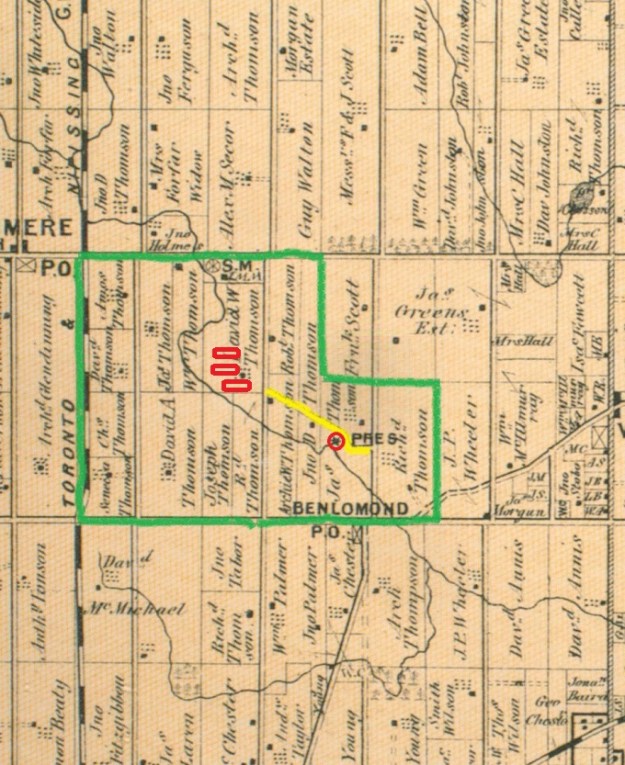
The Scottish brought their faith with them and church meetings were a central gathering place for farmers scattered across the side roads. In 1818 a Presbyterian Congregation was established that met sporadically in peoples homes. David Thomson donated an acre of property for a church building and a kirkyard to bury their dead on a rise of land overlooking their farm. The original wooden building was erected in 1819 and replaced with the current brick building in 1849. The church is celebrating their 200th anniversary this year making them the oldest Presbyterian church in the city of Toronto. Above the door is a date stone with the words Jehoveh Jireh (The Lord will provide) and the year 1849. In 1834 the church organized the first library in Scarborough with James Thomson as librarian. When a new building was erected in 1896 it was placed adjacent to the church.

The original one acre of land that was given to the church contained a small cemetery and a wood frame building. When the new church was built the old one was dismantled and the site was taken over as graveyard. Many Thomsons are buried here with one recent interment taking place in 2013. David and Mary lie here and have had a new monument erected in their honour.
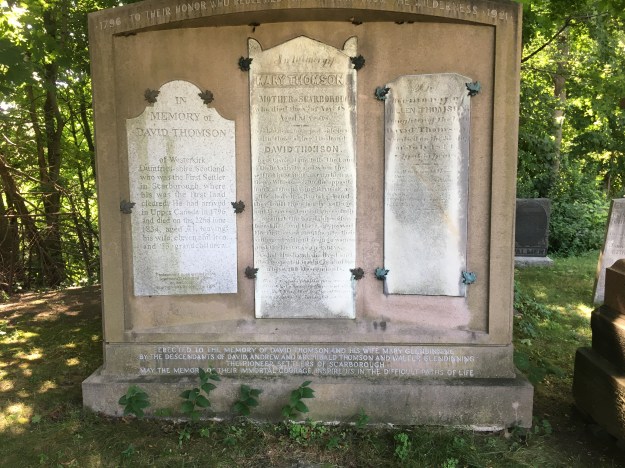
A church sexton was the person who was charged with taking care of the church, cemetery grounds and for digging graves. At St. Andrews the congregation built a home for the sexton in 1883. This story and a half house stands at the far end of the cemetery from the church. The simple board and batten construction was typical for worker’s homes in that era. The house opens into the cemetery as a back yard and there are reports of the cemetery and the house both being haunted.
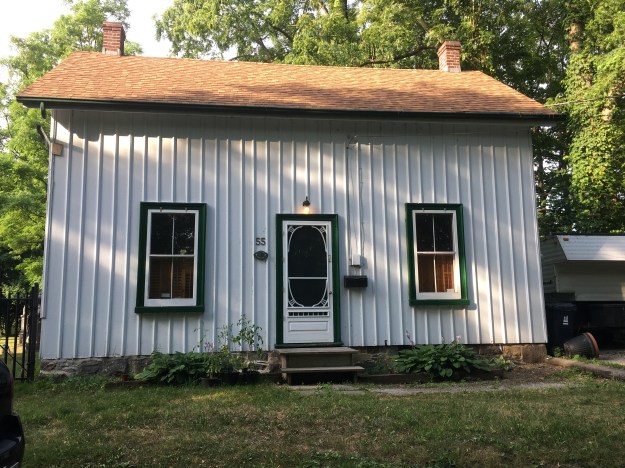
William D. Thomson was the eighth child of David and Mary and in 1848 he built a field stone house at the corner of the church lane and Brimley Road. As a result he would gain the nickname “Stonehouse Willie”. William’s granddaughter Isabella lived in this house from 1942 to 1970 when she passed away at the age of 96. When she graduated in medicine in 1902 Isabella was the first Scarborough woman to become a doctor. She then served in India for 40 years before returning home.

Just past the church is the home built by Andrew Thomson in 1840. Andrew was a brother of David Thomson. Across Brimley Road from the old lane way to the church was an additional parcel of land that belonged to David Thomson. On the table lands above Highland Creek a village of longhouses stood around 1200 A.D. Excavations revealed 17 longhouses and thousands of fragments of pottery and bone. Many spear and arrow heads were also recovered. Eight hundred years ago the scene would have been much different than the picture below with forests surrounding the village and the creek flowing much stronger than today. The natives lived on simple agriculture, fishing and hunting. They buried their dead on a hill to the east of the village. Today we call it Taber Hill and the remains of 472 people were discovered there in two ossuaries. Three red ovals mark the site of the longhouses on the county atlas above.
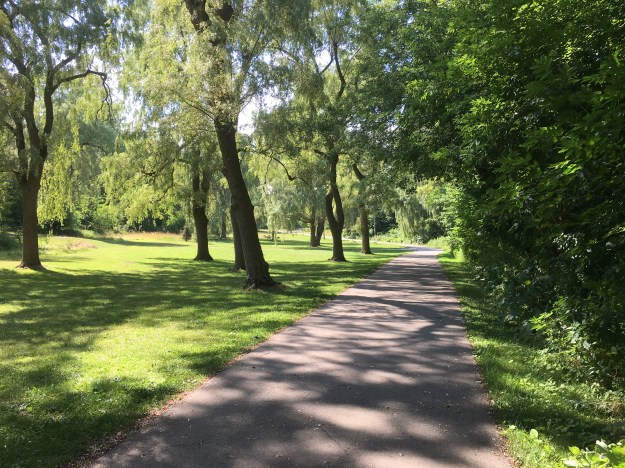
Thomson Memorial Park sits on the homestead of David and Mary. The park is also home to the Scarborough Historical Society which has gathered a small display of buildings and artifacts. Both of the historical houses on the property have been reported to be haunted. One display in the collection is the original tools from the Hough Carriage Works that operated at Eglinton and Birchmount Road starting in 1856. They produced carriages, wagons and bicycles for the area until the 1940’s when the buildings were demolished. The equipment was saved and in 1984 the Scarborough Historical Society built a 1/4 scale shop in which to house them. One of the tools on display is Hough’s 1871 manual drill press. It was used to drill holes in wood and thin metal.

The museum houses a Penny-Farthing bicycle that was made in the carriage works building some time in the 1880’s. The bicycle adopted the name based on the wheel sizes. In order to make peddling easy and high speeds achievable, the front wheel was much larger than the rear. This design allowed the cyclist to travel a large distance relative to a short pedal stroke. The invention of chain driven gear systems on bikes allowed the wheels to be smaller reducing the risk of falling from a height. The name reflects the difference in size between a British penny and a farthing.

This log cabin was built in 1830 and occupied by a lifelong bachelor named William Porteus McCowan. It was typical of a first home for a new settler and would have been built from the first few trees cleared on the lot. McCowan was a sheep farmer and shared the cabin with his workers who slept in the attic. Other members of the McCowan family settled near the Scarborough Bluffs and McCowan Road is named in honour of the family.

The Cornell house was built in 1858 and would be typical of a second house, built by an established family. The Cornells were apple farmers and their 8 children supplied much of the labour. The house was moved to this location in 1962 when the land it was sitting on was expropriated for a new railway bridge. The house is furnished in the late 19th century style and has many original household items that belonged to the Cornell family.
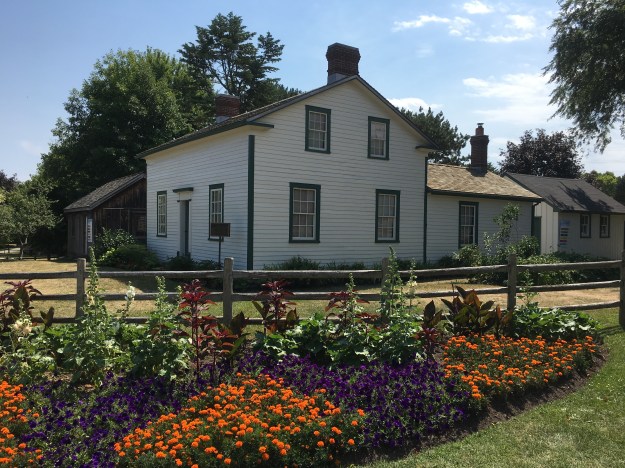
Thomson Memorial Park is 103 acres covering half of Scarborough’s first land grant and with all the trails, open space and historical museum it makes a great place to visit.
Google Maps Link: Thomson Memorial Park
Like us at http://www.facebook.com/hikingthegta
Follow us at http://www.hikingthegta.com

Reblogged this on josephdung.
Scarborough Historical has done a great job preserving their rural history, Many numerous buildings and sites scattered around scarborough still intact
Pingback: Toronto Historic Places | Hiking the GTA
Pingback: Log Cabins | Hiking the GTA
Pingback: Time Travel in Toronto | Hiking the GTA
Pingback: Uxbridge Historical Centre | Hiking the GTA